Berlin's Must-See Landmarks: A Journey
Join us on a free walking tour through Berlin's must-see places, perfect for those with ample time and a love for long walks, exploring history and culture.
Time
3 Hours
Stops
9 Places
Distance
5.3 km
Brandenburg Gate (Brandenburger Tor)
Start your exploration at Berlin's most iconic monument, the Brandenburg Gate, a neoclassical triumphal arch that symbolizes peace and unity.

Brandenburg Gate (Brandenburger Tor) (Source: Google Maps)
The Brandenburg Gate, an iconic symbol of Berlin, was commissioned by King Frederick William II in 1788 and completed in 1791. This neoclassical triumphal arch, designed by Carl Gotthard Langhans, features 12 Doric columns and stands as a testament to peace and unity. Originally serving as a city gate, it has witnessed numerous historical events, including Napoleon's march into Berlin and the fall of the Berlin Wall. Today, the gate is a gathering place for locals and tourists alike, often serving as a backdrop for celebrations and protests. As a UNESCO World Heritage site, the Brandenburg Gate represents not only the tumultuous history of Germany but also its hopeful future.
Reichstag Building
A short walk from the Brandenburg Gate, visit the historic Reichstag Building, home to the German parliament, and admire its impressive glass dome.

Reichstag Building (Source: Google Maps)
The Reichstag Building, completed in 1894, is a historic edifice that serves as the seat of the German parliament. Designed by architect Paul Wallot, it features a distinctive glass dome added during the building's renovation in the 1990s by architect Norman Foster. This dome symbolizes transparency in government and offers visitors stunning views of Berlin from its observation deck. The Reichstag has a tumultuous history, having been set on fire in 1933, which led to significant political changes in Germany. It was also the site of the symbolic surrender of the German forces in World War II. Today, the Reichstag stands as a symbol of democracy and is an important landmark in Berlin.
Memorial to the Murdered Jews of Europe (Holocaust Memorial)
Continue your journey to this poignant and powerful memorial, consisting of 2,711 concrete slabs, commemorating the Jewish victims of the Holocaust.
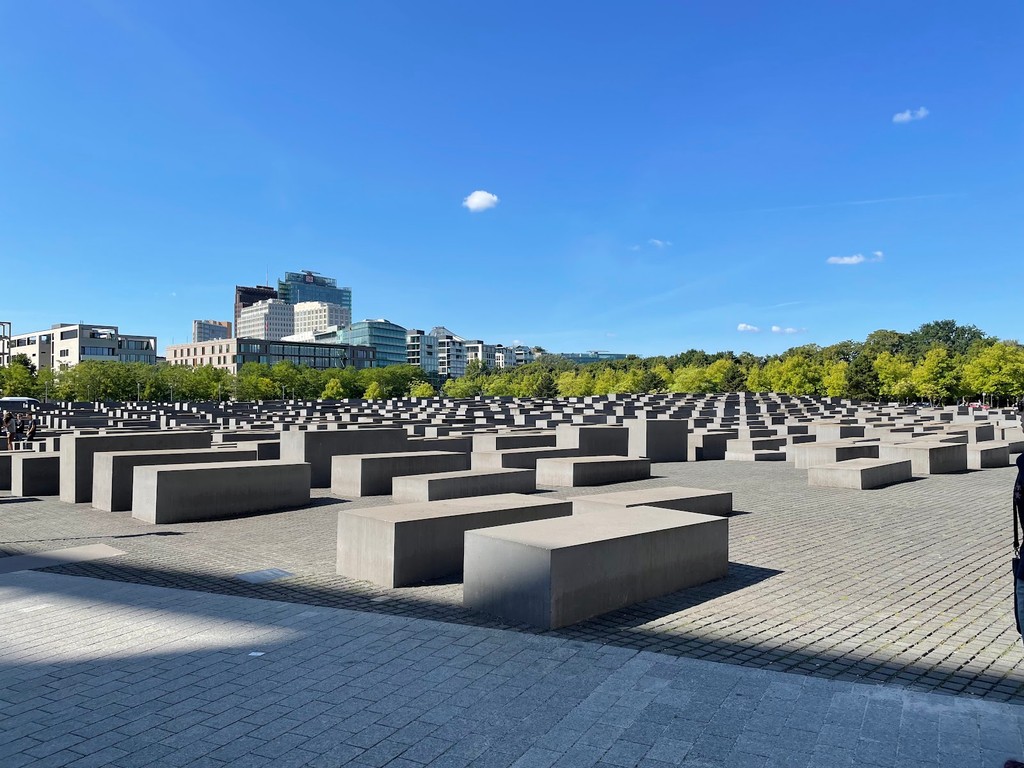
Memorial to the Murdered Jews of Europe (Holocaust Memorial) (Source: Google Maps)
The Memorial to the Murdered Jews of Europe, designed by architect Peter Eisenman and completed in 2005, is a poignant tribute to the Jewish victims of the Holocaust. The memorial consists of 2,711 concrete slabs of varying heights, arranged in a grid pattern on a sloping site. The design evokes feelings of disorientation and unease, reflecting the complexities of memory and loss. Beneath the surface lies an information center that provides visitors with insights into the Holocaust and the personal stories of its victims. This memorial is not only a place of remembrance but also a space for reflection on the consequences of hatred and intolerance.
Potsdamer Platz
Once a bustling square before WWII, Potsdamer Platz is now a vibrant area showcasing modern architecture and the dynamic spirit of Berlin.
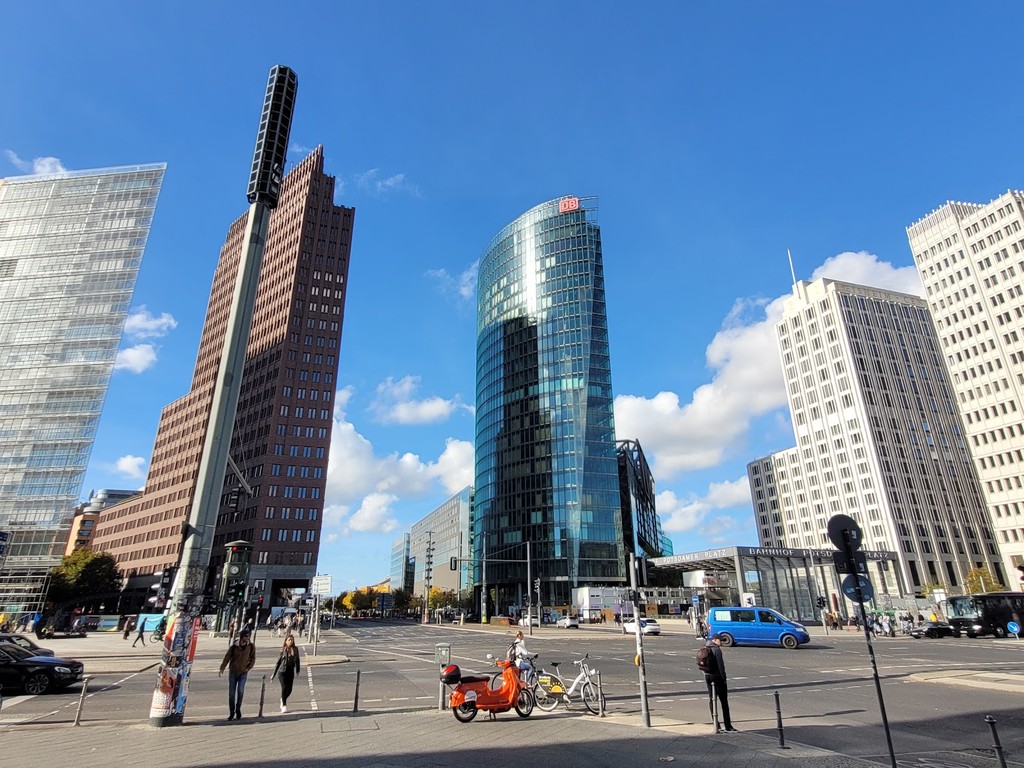
Potsdamer Platz (Source: Google Maps)
Potsdamer Platz is a vibrant area in Berlin that has undergone significant transformation since its revitalization in the 1990s. Once a bustling square before World War II, it fell into neglect during the war and the subsequent division of Berlin. Today, it showcases modern architecture, including the iconic Sony Center, with its striking glass roof and innovative design. The square hosts numerous shops, restaurants, and entertainment venues, making it a dynamic hub of activity. Potsdamer Platz is also home to the annual Berlin International Film Festival, attracting filmmakers and cinema enthusiasts from around the globe. This area embodies the spirit of a reunified Berlin, blending history with contemporary culture.
Topography of Terror
Head to this historical site, which served as the headquarters of the Gestapo and SS, now a museum documenting the atrocities of the Nazi regime.

Topography of Terror (Source: Google Maps)
The Topography of Terror is a historical site located on the former grounds of the Gestapo and SS headquarters. Opened in 2010, the museum documents the atrocities committed by the Nazi regime, offering visitors a comprehensive understanding of this dark chapter in history. The outdoor and indoor exhibitions include photographs, documents, and multimedia presentations that detail the rise of the Nazis, their policies, and the impact on individuals and society. The site also features remnants of the Berlin Wall, providing context to the division of the city during the Cold War. The Topography of Terror serves as an important educational resource, emphasizing the need for vigilance against totalitarianism and the importance of remembering the past.
Checkpoint Charlie
Visit the most famous Berlin Wall crossing point between East and West Berlin during the Cold War, now a significant historical site.
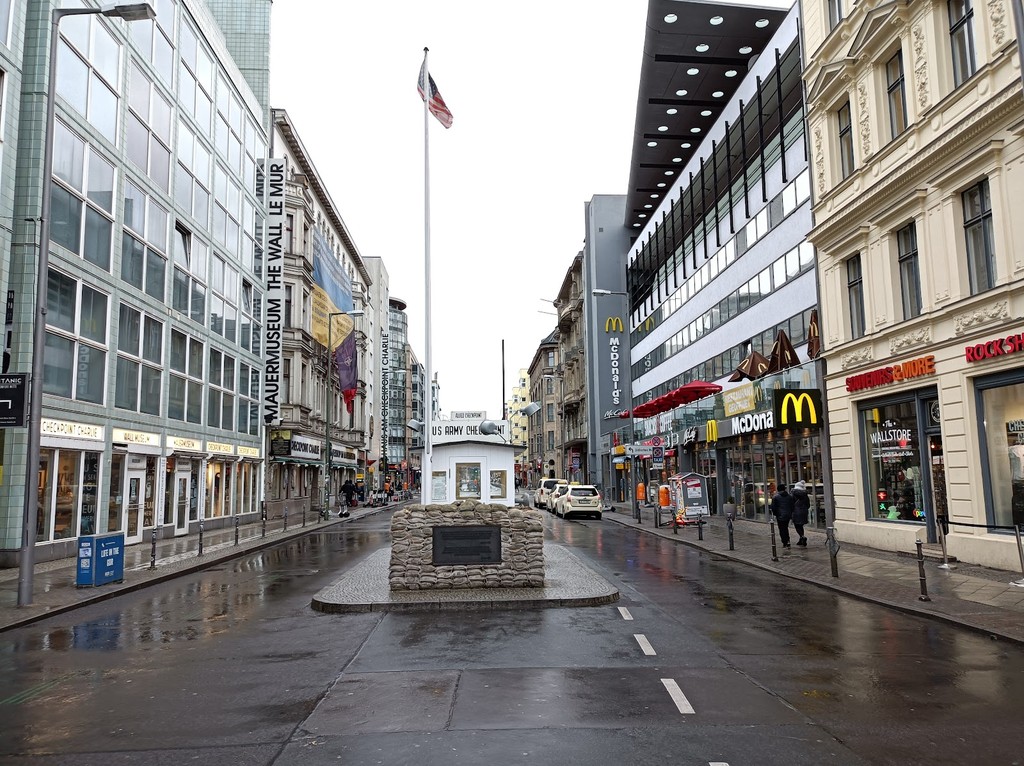
Checkpoint Charlie (Source: Google Maps)
Checkpoint Charlie was the most famous crossing point between East and West Berlin during the Cold War. Established in 1961, it became a symbol of the divided city and the tensions of the Cold War era. The checkpoint was heavily guarded and monitored, serving as the primary passage for foreigners and diplomats between the two sides. Today, a replica of the original guardhouse and informative displays mark the site, allowing visitors to learn about the significance of Checkpoint Charlie in the context of Berlin's history. The area surrounding the checkpoint has been transformed into a vibrant tourist destination, with museums and memorials that recount the stories of those who attempted to escape from East to West Berlin.
Gendarmenmarkt
Stroll to Gendarmenmarkt, considered one of Berlin's most beautiful squares, featuring the stunning Konzerthaus and the French and German Churches.
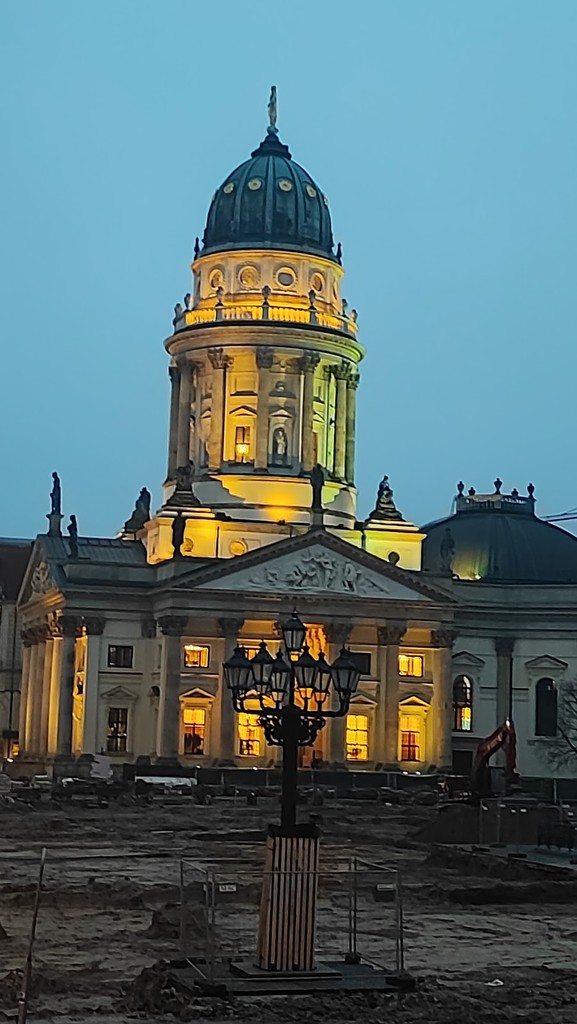
Gendarmenmarkt (Source: Google Maps)
Gendarmenmarkt is considered one of Berlin's most beautiful squares, renowned for its stunning architecture and cultural significance. It features three prominent buildings: the Konzerthaus Berlin, the French Cathedral, and the German Cathedral. The square was designed in the late 17th century and has since become a popular gathering place for both locals and tourists. The Konzerthaus, designed by Karl Friedrich Schinkel, hosts a variety of concerts and events throughout the year. The French Cathedral, with its elegant dome, represents the Huguenot community, while the German Cathedral serves as a reminder of Protestant heritage. Gendarmenmarkt is also home to several festivals and markets, making it a lively cultural center in the heart of Berlin.
Museum Island (Museumsinsel)
Explore Museum Island, a UNESCO World Heritage site, home to five world-renowned museums, perfect for art and history enthusiasts.
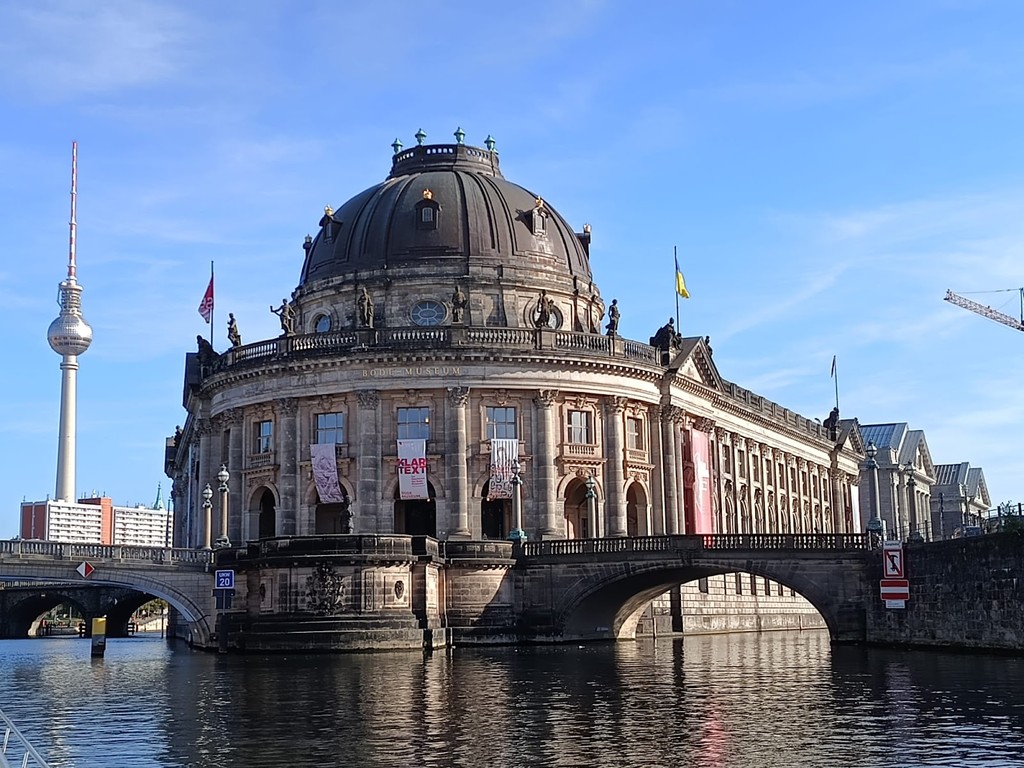
Museum Island (Museumsinsel) (Source: Google Maps)
Museum Island, a UNESCO World Heritage site, is a cultural treasure located in the heart of Berlin. It is home to five world-renowned museums: the Altes Museum, the Neues Museum, the Alte Nationalgalerie, the Bode Museum, and the Pergamon Museum. This unique ensemble showcases a remarkable collection of art and artifacts spanning thousands of years, including ancient Egyptian relics, classical antiquities, and 19th-century masterpieces. The island itself is a stunning architectural marvel, with buildings designed by prominent architects like Friedrich Schinkel and Alfred Messel. Museum Island attracts millions of visitors each year, making it a must-visit destination for art and history enthusiasts seeking to immerse themselves in Berlin's rich cultural heritage.
Berliner Dom (Berlin Cathedral)
End your tour at the majestic Berlin Cathedral, an architectural masterpiece offering breathtaking views of the city from its dome.
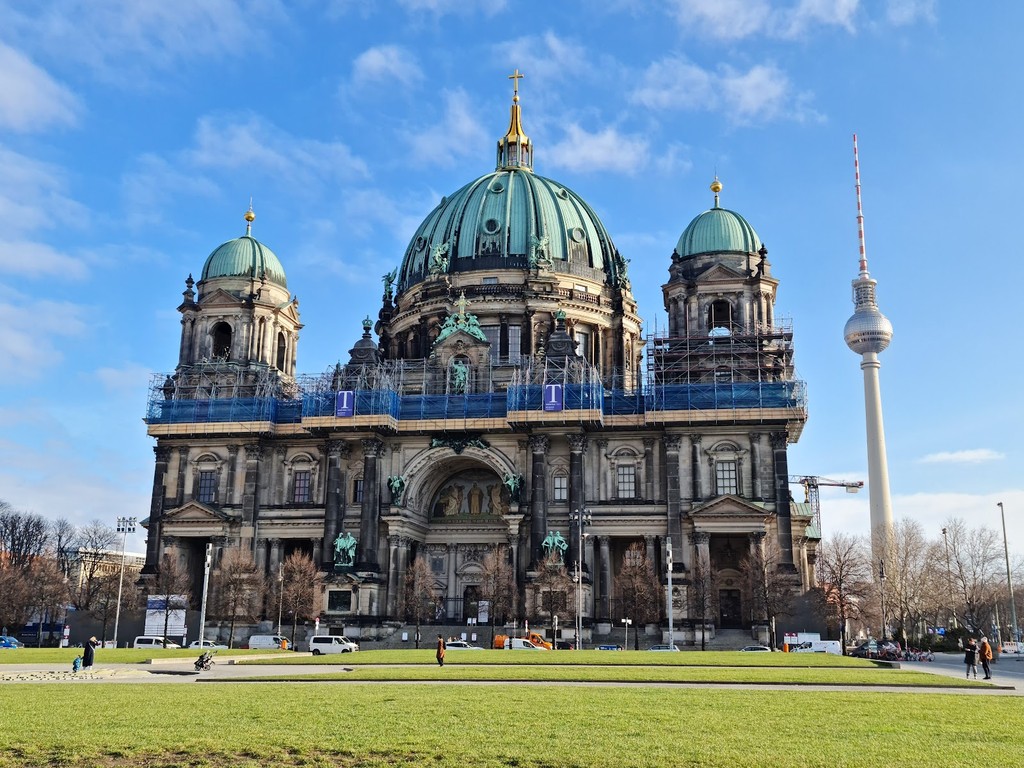
Berliner Dom (Berlin Cathedral) (Source: Google Maps)
The Berliner Dom, or Berlin Cathedral, is a magnificent Protestant church located on Museum Island. Completed in 1905, it features a stunning dome that rises 98 meters high, making it one of Berlin's most prominent landmarks. The cathedral's architectural style is a blend of Renaissance and Baroque elements, designed by architect Julius Raschdorff. Inside, visitors can admire the beautifully crafted altar, intricate mosaics, and the impressive organ, one of the largest in Germany. The dome offers breathtaking panoramic views of Berlin, accessible via a staircase that leads to the viewing platform. The Berlin Cathedral hosts various concerts and religious services, making it an important cultural and spiritual center in the city.

Your travels, your rules.
Create your own Free Walking Tours.
Set your preferences, distances and anything you want to do or see.
Completely free, no payment required.